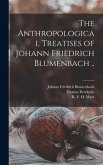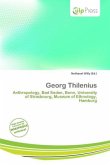Please note that the content of this book primarily consists of articles available from Wikipedia or other free sources online. Prof. Dr. Johann Carl Fuhlrott was born December 31, 1803 in Leinefelde, Germany, and died October 17, 1877 in Elberfeld, (Wuppertal). He is famous for recognizing the significance of the bones of Neanderthal 1, a Neanderthal specimen discovered by German laborers who were digging for limestone in Neanderthal (Neander Valley in German) in August 1856. Originally disregarded, Fuhlrott, to his eternal credit, had the insight to recognize them for what they were: the remains of a previously unknown type of human. His parents were the innkeeper Johannes Philipp Fuhlrott and his wife Maria Magdalena, née Nussbaum. His parents had died by the time he was ten and he was raised by his uncle, the Catholic priest Carl Bernhard Fuhlrott in Seulingen. In 1835 he married Josepha Amalia Kellner (1812 1850), with whom he had six children. After studying mathematics andnatural sciences at the University of Bonn, Fuhlrott became a teacher at the Gymnasium in Elberfeld. In 1856, workers in a lime quarry in the nearby canyon called Gesteins or Neanderthal (Neandertal southwest of Mettmann) showed him bones they had found in a cave and thought to belong to a bear.
Bitte wählen Sie Ihr Anliegen aus.
Rechnungen
Retourenschein anfordern
Bestellstatus
Storno








